
Photo: ©Sm/Aeiou www.sebastianmayer.com

Hili Perlson

Berlin may have won a reputation as a particularly affordable city and a good (if not always inviting) place for artists to live and work in, but gallerists in the poor-but-sexy capital are not immune to the pressures that come with being essentially based in a city without collectors. Last year, several renowned galleries decided to discontinue their Berlin operations: Moeller Fine Art closed its Berlin branch in July (see Moeller Fine Art Closes Berlin Gallery), followed by Galerie Kamm in the fall (see Berlin’s Galerie Kamm Will Close in September).
Galerie Cinzia Friedlaender shut down quietly at the end of 2014, and Lüttgenmeijer gallery stopped after a decade in Berlin in order to reopen later this year at a Cologne location. The latest closure came in January from Figge von Rosen (see Figge von Rosen Closes Berlin Gallery) which will only maintain its Cologne location.
Amid the quickly changing landscape, however, the city has also witnessed a string of new additions over the past few years. Some of them started out cautiously as project spaces, like Sandy Brown, or Silberkuppe, but are now holding full gallery programs complete with art fair participation.
Others, like Société or Kraupa-Tuskany Zeidler, which opened in 2010 and 2011 respectively, tapped into the highly visible generation of artists name-checked with every mention of the so-called post-Internet generation, and who are enjoying a moment in the spotlight with institutions and collectors alike.
And others still, like Lars Friedrich, who opened his own space in a small apartment in 2011, started out working for other galleries (Christian Nagel in this case) before opening their own.
And then there’s also the veteran high-roller Galerie Kewenig who, after 25 years in the Rhineland, has moved from Cologne to a stunning palatial location in Berlin in 2013.
So, what still motivates gallerists to give Berlin a try? artnet News asked eight of the most interesting recent additions to the city’s art scene for their take on the city.
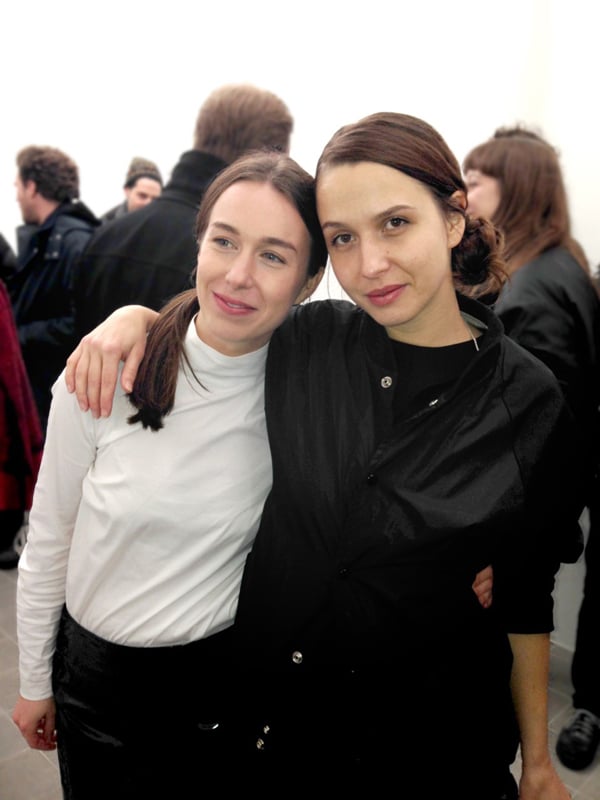
Verena Gillmeier and Claudia Rech.
Photo: Courtesy of Gillmeier Rech Gallery.
1. Gillmeier Rech
Artist Verena Gillmeier and curator Claudia Rech met during a studio visit and realized they shared a similar vision. They opened their space in November of 2013.
Their roster, which boasts Lindsay Lawson, Marco Bruzzone, and Zuzanna Czebatul, among others, started out from within their circle of friends and slowly spread out, with artists such as Brent Wadden and Sol Calero participating in their group shows.
The partners share all aspects of gallery work equally, though reportedly, Gillmeier manoeuvres the transport truck with more gusto while Rech’s aptitude lies with filing tax reports. “It’s not easy for young galleries anywhere,” they say. “We find Berlin exciting and want to work here.”

Jens Mentrup and Nina Köller.
Photo: ©Sm/Aeiou www.sebastianmayer.com.
2. KM
Real-life partners Nina Köller and Jens Mentrup opened their space together in 2012. Mentrup worked previously as an independent curator for Cologne’s Simultanhalle, followed by stints at the mobile exhibition platform Wheely, and project space Note On in Berlin. He also worked in the galleries Christian Nagel and Giti Nourbhaksch.
Köller worked for the Kunstverein Frankfurt and the European Kunsthalle in Cologne, as well as Berlin galleries Johann König and Esther Schipper before launching KM. Their artist list includes Daniel Laufer, Lily Wittenburg, and Brunhilde Groult, among others.
“Berlin enables constant exchanges; you can make a lot of contacts here very quickly,” they affirm. “But we’re interested in the city as a production hub–that’s also reflected in our choice of location near the Uferhallen and the Uferstudios. Berlin is a city where it’s still worthwhile to try to give visibility to relevant artistic position with new gallery formats.”
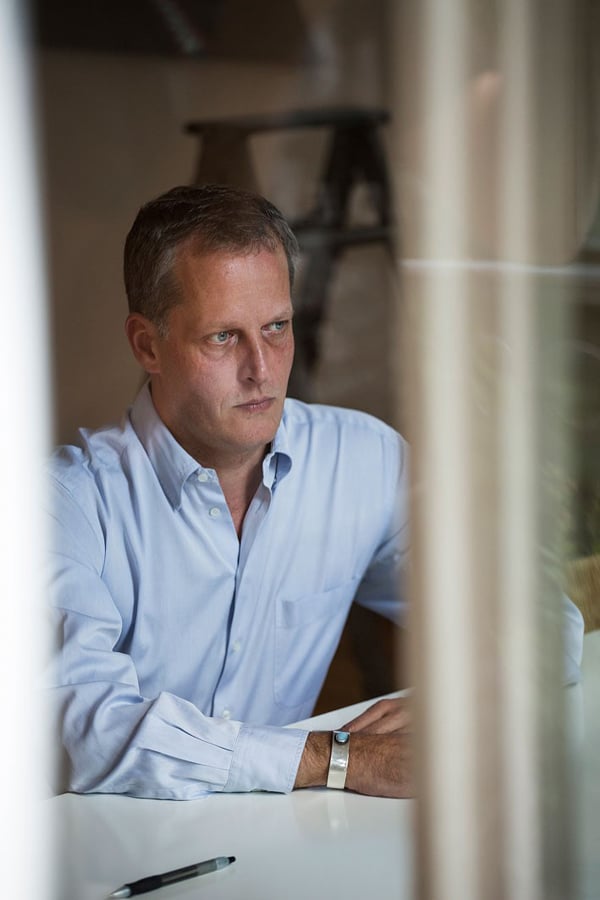
Daniel Marzona.
Photo: ©Jakob Hoff, Berlin.
3. Daniel Marzona
Daniel Marzona has experience in various aspects of the art world under his belt. He was a curator at P.S.1 early on in his career, and went from there to Trieste, where he co-founded a publishing company for artists’ books and contemporary architecture. Marzona was also a director at Konrad Fischer gallery in Berlin for seven years before opening his own space in September 2014. The gallery is currently showing Nina Canell, to be followed by an exhibition by Zvi Goldstein.
“Art is not–and shouldn’t be–simplistic. That goes for its making as well as for its appreciation.” That’s also the message he brings to fairs such as Art Cologne or Arco Madrid. As for Berlin, “it isn’t easy anywhere,” he says, “so maybe it’s better not to complain and rather focus on what the city has to offer instead, namely, a lot of good people, and good, affordable spaces. Everything else is up to you to take care of.”
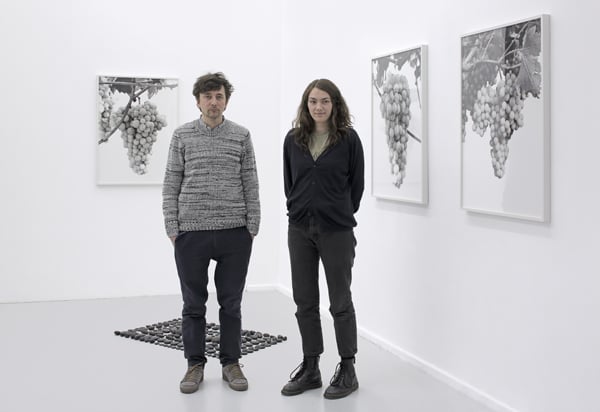
Peter Kersten and gallery director Bianca Heuser in the show by Yuki Kimura.
Photo: Courtesy of Mathew Gallery.
4. Mathew
David Lieske and Peter Kersten are the co-founders of post-minimalist dance music label Dial Records. The label, which started in 1999 in Cologne, enjoyed close ties to city’s art crowd. The record-label-owners became Berlin gallerists in 2011, when they set up in a West Berlin space.
David Lieske left Berlin for New York last year, to open up Mathew’s LES wing at the former location of 47 Canal.
Running a busy program, Mathew gallery channels—and perhaps helps shape—currents in popular indie culture, with shows by Kim Gordon, Ken Okiishi, Nicolas Ceccaldi or Villa Design Group, which they also showed at Frieze.
Well-aware of the difficulties of thriving in Berlin, they’ve already participated in numerous art fairs, including Liste, Frieze, Paramount Ranch, and Miart.
Though the Berlin space is central for them, the decision to open a second branch in New York was motivated in part by the realization that their program appealed more to American tastes.
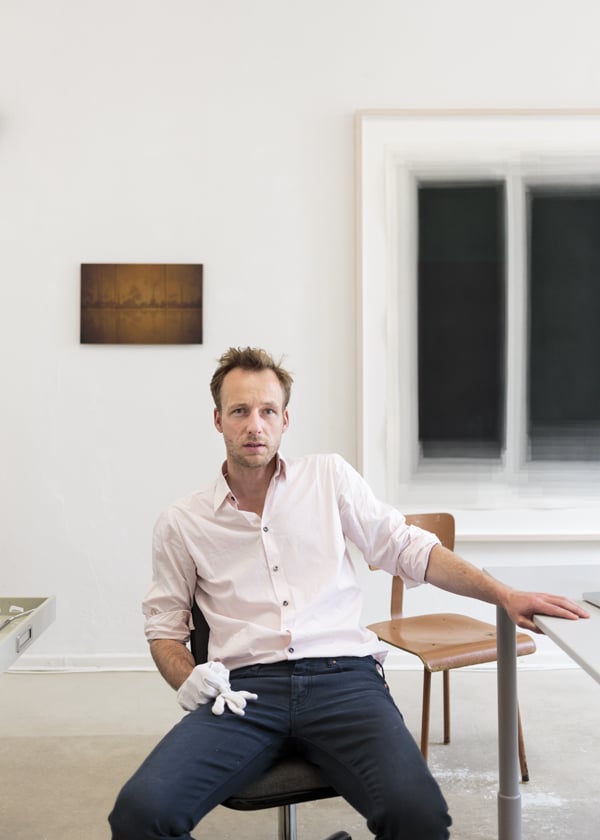
Thomas Fischer
Photo: ©Dawin Meckel/OSTKREUZ.
5. Thomas Fischer
Thomas Fischer worked as a freelance curator in Berlin, and as an educator at the Hoffmann private art collection before co-founding in 2007 the much-missed project space Souterrain. He also worked for Berlin’s top concept design boutique, Andreas Murkudis, with which he is now shares an address since opening his gallery in 2011, on the same grounds.
Fischer’s program includes both young and established names, such as Brian O’Doherty, Joachim Bandau, Cyrill Lachauer, or Japanese photographer Seiichi Furuya, with the aim of creating a cross-generational and cross-disciplinary discourse. “Berlin is still the place where you’d get the most chances of reaching a wide, enthusiastic audience; there’s plenty of room and plenty of discourse. Whether it’s worth it or not depends on how much you’re able to create demand beyond Berlin.” Like in Brussels for example, where Fischer is bringing his artists to the art fair in April.
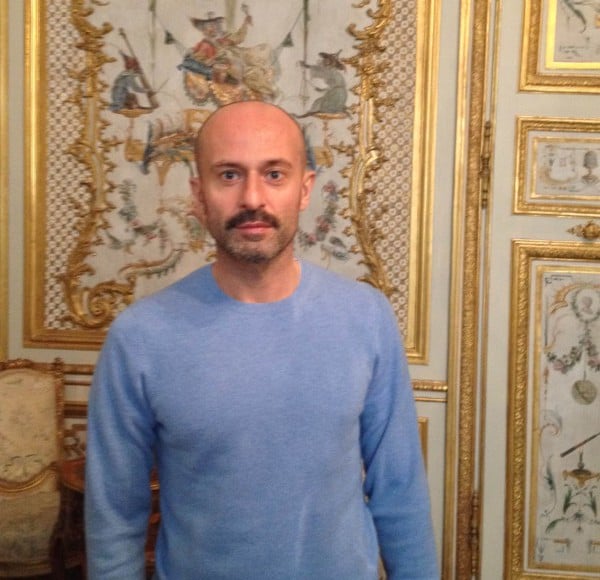
Xavier Laboulbenne.
Photo: courtesy xavierlaboulbenne, Berlin.
6. Xavier Laboulbenne
Between 1995 and 2000, Laboulbenne ran one of the first galleries to open in Chelsea, New York where he represented artists such as Charles Atlas, Marc Brandenburg, Ellen Cantor, Marilyn Minter, Carl Ostendarp, and Michael Sayles, and exhibited works by David Hammons, Pierre Molinier, and Andy Warhol, to name a few. He relocated to Berlin in 2000 working as an independent writer and curator. Here, he presented site-specific installations by Charles Atlas (in 2000) at OstGut club, the forerunner to the legendary Berghain; Christian Boltanski in Pfefferberg (2007); or Marcel Odenbach at the Schinkel Pavillon (2008), before founding his own gallery in a refurbished derelict metal factory in 2012.
His program focuses on multi-media artists mainly based in Berlin, and whose work reflects the zeitgeist of the German metropolis, such as Viron Erol Vert, Louis-Philippe Scoufaras, and Francisco Berná well as figures such as Michel Verjux, or Japanese bondage illustrator, Gengoroh Tagame, whose work stands in dialogue with these contemporary positions.
Like many of his colleagues, he enjoys the city’s thrills while maintaining a collectors base elsewhere: “I have the chance to live in Berlin, one of the most prolific and cosmopolitan creative centers, therefore I look around me—I have to look further for collectorship.”
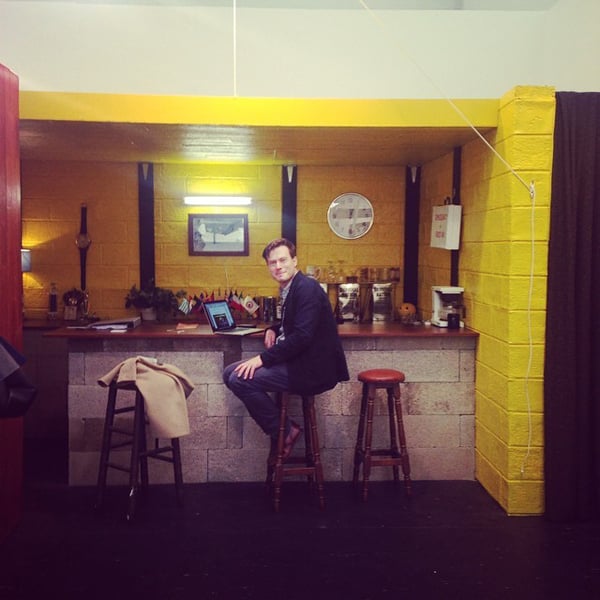
Dan Gunn.
Photo: Courtesy of Dan Gunn Gallery.
7. Dan Gunn
Dan Gunn opened his own gallery in 2012, after cutting his teeth at Maureen Paley and later, Lisson Gallery in London, and Capitain Petzel in Berlin.
His roster is geared towards building an international program with both emerging and established names and includes Alessio delli Castelli, Ingrid Furre, Adrià Julià, Alexandra Navratil, Tracey Rose, and Michael Smith.
With art fair participation at ARCO, Miart, Frieze New York, LISTE, SUMMA, Frieze London, and Art Basel Miami Beach under his belt, Gunn certainly took note of the reality in Berlin and the need to bring his gallery to an outside audience.
But it seems that this new wave of vibrant Berlin art spaces is also operating differently on other fronts: “There is a mood of confidence, generosity of spirit, and international outlook in a new generation of Berlin gallerists who I am proud to have as colleagues and we all support each other.”
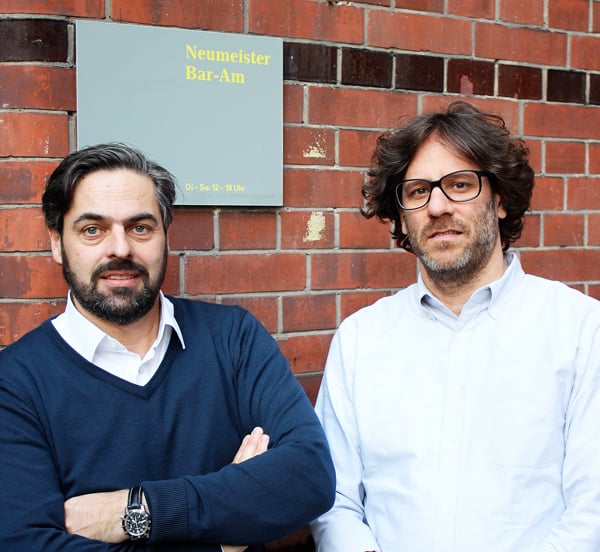
Jean-Pierre Neumeister and Barak Bar-Am.
Photo: Courtesy of Neumeister Bar-Am.
8. Neumeister Bar-Am
Barak Bar-Am and Jean-Pierre Neumeister founded their gallery in 2013 in West Berlin. Neumeister looks back at a career in industrial design, while Bar-Am, the son of a famous Israeli photographer, brings a background in architecture and art-making to the table.
The gallery’s program is still evolving with each opening, but their focus is always on the evolution of the role of images. Their artist list includes post-Internet age conceptualists Harm van den Dorpel, Rachel de Joode, and Kate Steciw, but also veteran Israeli architect Zvi Hecker, photographer Henrik Strömberg, and multi-media artist Daragh Reeves.
Though relatively very fresh, the gallery has already participated at abc (Art Berlin Contemporary) and Artissima. Opening a gallery, says Neumeister, was “about being more in touch with art, working with artists, and creating a space for them to develop. Art has always been a part of my life.”